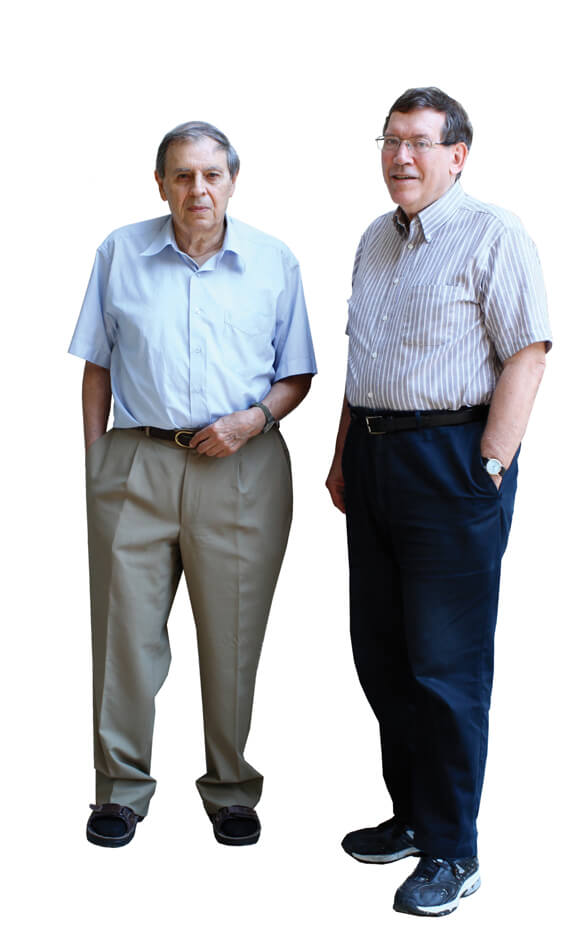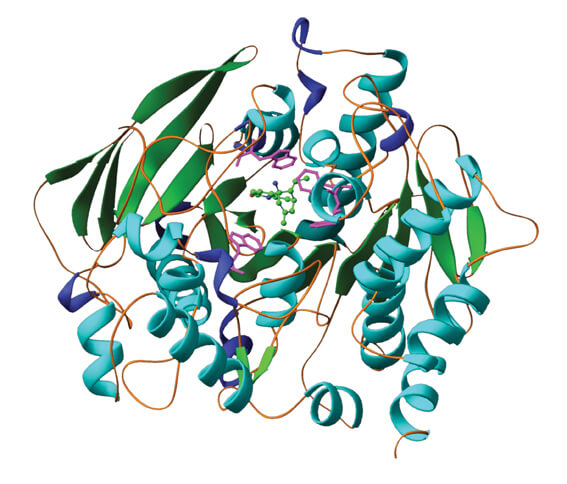The enzyme acetylcholinesterase, one of the fastest enzymes in nature, does not sit and wait for windows to open before it, but regularly uses two openings. A discovery by Prof. Yoel Sussman from the Weizmann Institute

When a door closes, somewhere a window opens - this is a common guarantee. Now it turns out that the enzyme acetylcholine esterase, one of the fastest enzymes in nature, does not sit and wait for windows to open before it, but regularly uses two openings. This surprising mechanism, recently discovered by Prof. Yoel Sussman from the Department of Structural Biology at the Faculty of Chemistry and Prof. Israel Silman from the Department of Neurobiology at the Weizmann Institute of Science, together with scientists from France and China, offers a solution to a long-standing question regarding the impressive speed of the enzyme's action. Understanding the exact mechanism of action of this enzyme may allow the development of better means to treat Alzheimer's.
Acetylcholinesterase plays a central role in the nervous system: it stops the passage of the nerve signal by rapidly breaking down the neurotransmitter acetylcholine. When there is too much acetylcholine in nerve junctions, the nerve signals "lock" the muscles, which can cause respiratory arrest and death. This is what happens when nerve gas, or pesticides, inhibit the breaking down enzyme, thereby causing a harmful build-up of the neurotransmitter. But, in the case of Alzheimer's disease, the inhibition of the disintegrating enzyme, which leads to the strengthening of neural communication, is actually a desirable process. Indeed, drugs for Alzheimer's disease are based on substances that inhibit the disintegrating enzyme. In other words, a better understanding of the enzyme may help find better ways to inhibit it, thus forming the basis for advanced treatment of Alzheimer's disease.

When Prof. Sussman and Prof. Silman studied the spatial structure of the enzyme acetylcholine esterase more than 20 years ago, they hoped that their findings would explain its rapid activity - the enzyme breaks down 100 million acetylcholine molecules per second. One of the hypotheses was that the active site (where acetylcholine is broken down) is right on the surface of the enzyme. But deciphering the structure showed that the active site is in the heart of the enzyme, at the end of a deep and narrow channel - which may actually create a bottleneck. Two more decades of hypotheses, hints and calculations were required, only at the end of it did the researchers receive unequivocal experimental proof, indicating the special solution found by the enzyme: a "secret door" that opens inside it allows the product to exit quickly, and prevents "traffic jams" in the channel.
The two scientists proposed the hypothesis of the existence of a "hidden door" almost two decades ago, and in a series of studies they carried out in collaboration with colleagues from around the world, "circumstantial evidence" of its existence began to accumulate. This evidence was based on the structure of the enzyme and electrostatic calculations, but not on experimental findings. Other findings ruled out the idea. Thus, for example, causing mutations in the approximate location of the hidden door did not affect the speed of the enzyme's action, and a computer simulation showed that the product actually comes out of a different place.
The latest findings, published in the scientific journal Protein Science, are based on deciphering the three-dimensional structure of the enzyme molecule with acetylcholine inside it, using X-ray crystallography. In some of the structures, the scientists definitely noticed the existence of a door that allows the products to pass out. The door is located at the end of the channel, and its opening mechanism is based on breaking the hydrogen bond that connects the two sides of the enzyme (like two halves of an oyster). The acetylcholine enters through the channel into the active site inside it, and then the decomposition products continue to move on and exit through the "secret door". The discovered pathway is identical to the pathway predicted through theoretical calculations based on molecular dynamics.
The researchers point out that a good understanding of the pathway that acetylcholine goes through within the enzyme will, perhaps, make it possible to develop more effective and targeted inhibitory substances - which will be used to treat Alzheimer's patients. It is possible, for example, that it will be possible to close the secret door, thus preventing the enzyme from working.
The three-dimensional structure of the acetylcholinesterase enzyme molecule, with acetylcholine (center, in light green) within the active site
Alzheimer's in numbers
- 1 in 8 Americans over the age of 65 has Alzheimer's, and close to half of people over the age of 85.
- Alzheimer's disease is the sixth cause of death in the US, and the fifth in the population over 65 years of age.
- The death rate from Alzheimer's disease for 2008 increased by 66% compared to 2000 (while mortality from other leading causes of death - including the first cause, heart disease - decreased during this period).
- As of 2010, 5.4 million Americans have Alzheimer's disease. Two-thirds of them are women, and 5.2 million of them are over the age of 65. In 2050, 16 million Americans are expected to suffer from the disease.
- Every 69 seconds another American develops Alzheimer's disease. By 2050, this rate is expected to double.
- Most Alzheimer's patients survive 8-4 years from the date of diagnosis, but some live up to 20 years with the disease.
- In 2011, the cost of treating Alzheimer's is expected to reach 183 billion dollars. In 2050, the cost of treatment is expected to reach 1.1 trillion dollars.
- Nearly 15 million people - relatives and friends of Alzheimer's and dementia patients - care for patients free of charge. These people are responsible for 80% of the hours of care and help that the patients receive in their homes. More than 60% of them rate the mental stress they experience as high or very high, and a third of them report depression.
- About half of Alzheimer's patients in the US have not undergone an "official" diagnosis to identify the disease.
*According to the Alzheimer's association report from 2011
